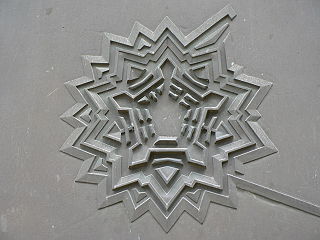 W
WMilitary engineering is loosely defined as the art, science, and practice of designing and building military works and maintaining lines of military transport and military communications. Military engineers are also responsible for logistics behind military tactics. Modern military engineering differs from civil engineering. In the 20th and 21st centuries, military engineering also includes other engineering disciplines such as mechanical and electrical engineering techniques.
 W
WA combat engineer in many armies is a soldier specialist who performs a variety of military engineering, mining, construction and demolition tasks under combat conditions.
 W
WAn area denial weapon or Anti Access/Area Denial (A2/AD) weapon system is a device or a strategy used to prevent an adversary from occupying or traversing an area of land, sea or air. The specific method used does not have to be totally effective in preventing passage as long as it is sufficient to severely restrict, slow down, or endanger the opponent. Some area denial weapons pose long-lasting risks to anyone entering the area, specifically to civilians, and thus are often controversial.
 W
WA blasting mat is a mat usually made of sliced-up rubber tires bound together with ropes, cables or chains. They are used during rock blasting to contain the blast, prevent flying rocks and suppress dust.
 W
WMilitary engineering is loosely defined as the art, science, and practice of designing and building military works and maintaining lines of military transport and military communications. Military engineers are also responsible for logistics behind military tactics. Modern military engineering differs from civil engineering. In the 20th and 21st centuries, military engineering also includes other engineering disciplines such as mechanical and electrical engineering techniques.
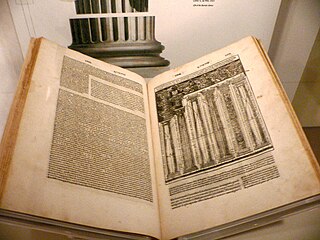 W
WDe architectura is a treatise on architecture written by the Roman architect and military engineer Marcus Vitruvius Pollio and dedicated to his patron, the emperor Caesar Augustus, as a guide for building projects. As the only treatise on architecture to survive from antiquity, it has been regarded since the Renaissance as the first book on architectural theory, as well as a major source on the canon of classical architecture. It contains a variety of information on Greek and Roman buildings, as well as prescriptions for the planning and design of military camps, cities, and structures both large and small. Since Vitruvius published before the development of cross vaulting, domes, concrete, and other innovations associated with Imperial Roman architecture, his ten books give no information on these hallmarks of Roman building design and technology.
 W
WGaleas per montes is the name by which an enterprise of military engineering made between December 1438 and April 1439 by the Republic of Venice and consisting of the transport of ships, Galleys and frigates from the Adriatic Sea to Lake Garda, climbing the river Adige to Rovereto and transporting ships by land to Torbole, on the northern shores of the lake. A journey of about 20 km through the mountains and the Loppio Lake, now almost disappeared following the construction of the Galleria Adige-Garda, which emptied the lake above.
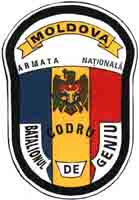 W
WThe Independent Engineer Battalion "Codru" is the engineering formation of the Moldovan National Army, based in the village of Negrești, Strășeni District. Soldiers of the battalion soldiers have been on international missions, including the Kosovo Force mission in Kosovo.
 W
WKrakatoa is a modular explosive device used for explosive ordnance disposal (EOD) or demolitions developed by the British company Alford Technologies. The device is designed to fire a number of different projectiles, operates both in air and underwater, and can be used in a vertical or horizontal orientation.
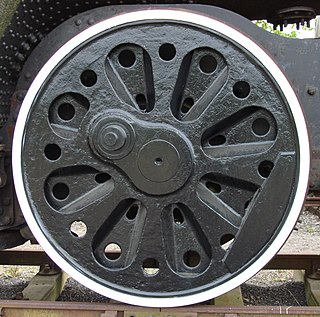 W
WLightening holes are holes in structural components of machines and buildings used by a variety of engineering disciplines to make structures lighter. The edges of the hole may be flanged to increase the rigidity and strength of the component. The holes can be circular, triangular, elliptical, or rectangular and should have rounded edges, but they should never have sharp corners, to avoid the risk of stress risers, and they must not be too close to the edge of a structural component.
 W
WMarston Mat, more properly called pierced steel planking (PSP), is standardized, perforated steel matting material developed by the United States at the Waterways Experiment Station shortly before World War II, primarily for the rapid construction of temporary runways and landing strips. The nickname came from Marston, North Carolina, adjacent to Camp Mackall airfield where the material was first used.
 W
WMilitary geology is the application of geological theory to warfare and the peacetime practices of the military. The formal practice of military geology began during the Napoleonic Wars; however, geotechnical knowledge has been applied since the earliest days of siege warfare. In modern warfare military geologists are used for terrain analysis, engineering, and the identification of resources. Military geologists have included both specially trained military personnel and civilians incorporated into the military. The peacetime application of military geology includes the building of infrastructure, typically during local emergencies or foreign peacekeeping deployments.
 W
WA pioneer is a soldier employed to perform engineering and construction tasks. The term is in principle similar to sapper.
 W
WThe Reich Labour Service was a major organisation established in Nazi Germany as an agency to help mitigate the effects of unemployment on the German economy, militarise the workforce and indoctrinate it with Nazi ideology. It was the official state labour service, divided into separate sections for men and women.
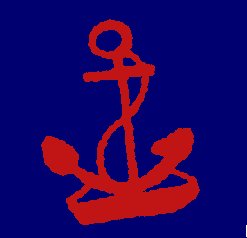 W
WThe Royal Australian Naval Bridging Train was a unique unit of the Royal Australian Navy. It was active only during the First World War, where it served in the Gallipoli and the Sinai and Palestine Campaigns. The Train was formed in February 1915 and stood down in May 1917. Throughout its existence, it was composed of Royal Australian Naval Reservists under the command of Lieutenant Commander Leighton Bracegirdle. Normally under the command of the British IX Corps, the Train also supported the I ANZAC Corps and Imperial Camel Corps in the defence of the Suez Canal.They were the only Australian naval unit serving in a European theatre of war. They were therefore bent on proving, both to the Royal Navy and to the British Army, that they could overcome any difficulties.
 W
WThe Royal Engineers Museum, Library and Archive is a military engineering museum and library in Gillingham, Kent. It tells the story of the Corps of Royal Engineers and British military engineering in general.
 W
WThe Royal Pioneer Corps was a British Army combatant corps used for light engineering tasks. It was formed in 1939 and amalgamated into the Royal Logistic Corps in 1993. Pioneer units performed a wide variety of tasks in all theatres of war, including stretcher-bearing, handling all types of stores, laying prefabricated track on beaches, and effecting various logistical operations. Under Royal Engineers supervision, they constructed airfields and roads and erected bridges; they constructed the Mulberry Harbour and laid the Pipe Line Under the Ocean (PLUTO).
 W
WThe Salpa Line Museum was established and opened in 1987 by the Miehikkälä municipality and the Second World War veteran organisations. It is the first museum established belonging to the museums of Miehikkälä. The other museum is Miehikkälän kotiseutumuseo, the Miehikkala local arts-and-crafts museum, which was established in 1989 and is in the same building as the Engineers Museum.
 W
WA sapper, also called pioneer or combat engineer, is a combatant or soldier who performs a variety of military engineering duties such as breaching fortifications, demolitions, bridge-building, laying or clearing minefields, preparing field defenses, as well as working on road and airfield construction and repair. They are also trained to serve as infantry personnel in defensive and offensive operations. A sapper's duties are devoted to tasks involving facilitating movement, defence and survival of allied forces and impeding those of enemies. The term "sapper" is used in the British Army and Commonwealth nations, the Polish Army and the U.S. military. The word "sapper" comes from the French word sapeur, itself being derived from the verb saper.
 W
WSapping is a term used in siege operations to describe the digging of a covered trench to approach a besieged place without danger from the enemy's fire. The purpose of the sap is usually to advance a besieging army's position towards an attacked fortification. It is excavated by specialised military units, whose members are often called sappers.
 W
WA traverse in trench warfare is an adaptation to reduce casualties to defenders occupying a trench. One form of traverse is a U-shaped detour in the trench with the trench going around a protrusion formed of earth and sandbags. The fragments or shrapnel, or shockwave from a shell landing and exploding within a trench then cannot spread past the obstacle the traverse interposes. Also, an enemy that has entered a trench is unable to fire down the length at the defenders, or otherwise enfilade the trench.
 W
WTunnel warfare is a general name for war being conducted in tunnels and other underground cavities. It often includes the construction of underground facilities in order to attack or defend, and the use of existing natural caves and artificial underground facilities for military purposes. Tunnels can be used to undermine fortifications and slip into enemy territory for a surprise attack, while it can strengthen a defence by creating the possibility of ambush, counterattack and the ability to transfer troops from one portion of the battleground to another unseen and protected. Also, tunnels can serve as shelter for combatants and non-combatants from enemy attack.
 W
WThe Underwater Demolition Teams (UDT) were a special-purpose force established by the United States Navy during World War II. They came to be considered more elite and tactical during the Korean and Vietnam Wars. Their primary WWII function began with the reconnaissance and removal of natural or man-made obstacles on beaches prior to amphibious landings. They later were assigned to assist in the recovery of space capsules and astronauts after splash down in the Mercury and Apollo space flight programs. The United States Navy's Underwater Demolition Teams were pioneers in underwater demolition, closed-circuit diving, combat swimming, and midget submarine operations. Commando training was added making them the forerunner to the United States Navy SEAL program that exists today.